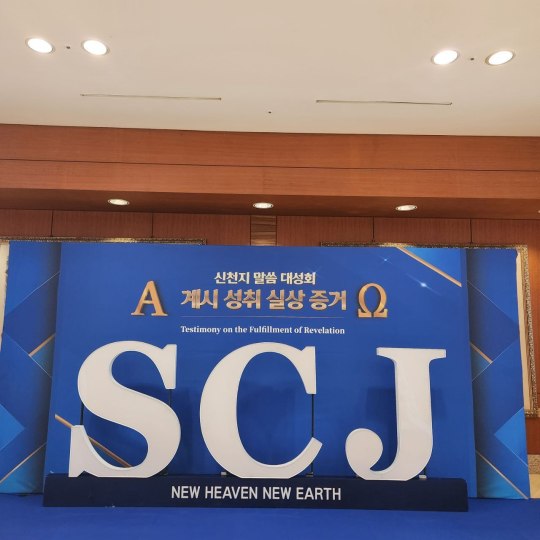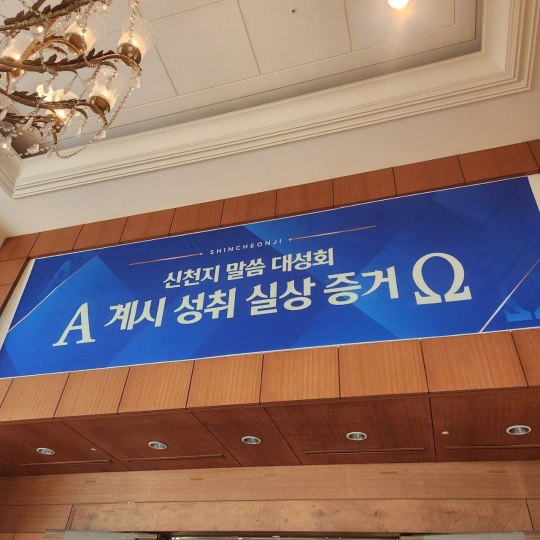#Simultaneous Interpretation for Chinese Language
Explore tagged Tumblr posts
Text

Simultaneous Interpretation for Chinese Language!
China, a country with the highest population globally, inhabits the native speakers of the language Chinese. DelSh Business Consultancy offers a reliable network of Chinese interpreters with a strong background. They make your meetings highly captivating and trustworthy, as if you are talking to your friend or neighbor. A business meeting, webinar, or conference could need an efficient interpreter to accurately express your message’s content. This could help you reach new heights of success.
Click here and get a free quote today! [email protected] For more about our services, Visit Our Website: https://www.delshlanguageconsultancy.com/services/chinese-interpretation-services/
#Simultaneous Interpretation for Chinese Language#Simultaneous Interpretation#translation services in india#translation services
0 notes
Text
MDZS Vol 4 Annotations
Part 1, pages 1-49
I finally finished Book 4! It was beautiful! I loved it! But a lot of word and phrasing choices didn’t fit my personal interpretation of the MDZS world, and the final chapter of Book 4 was translated based on an earlier version of MDZS, so I have a ton of notes.
Alright. Here we go:

The author is very affectionately roasting LWJ here, and simultaneously showing how LXC is an expert at reading his enigmatic little brother. The contrast between the high-register language of the brothers’ conversation vs the relatively informal narrative language is obvious in Chinese, and serves to make this short and otherwise rather somber exchange more interesting and a little bit fun.


I had a hard time with contractions and slang in this book. I’m sure it’s in all the other books, too, but this time the “gonna”s and “gotta”s and “yah”s rubbed me the wrong way.
Every single character in MDZS (except Xue Yang) is highly educated and speaks with care and precision. WWX talks more colloquially than LWJ (or, rather, LWJ speaks like ancient poetry and WWX just talks), and JC tends to punctuate conversations with criticism and threats, but they all speak like they endured years of formal schooling and have hundreds of classical poems and ancient texts memorized.







#mdzs#魔道祖师#mo dao zu shi#grandmaster of demonic cultivation#translations#mxtx#novel#translation#seven seas
17 notes
·
View notes
Text
Flexible Aesthetics and Cross-Cultural Imagination: A Feminist Perspective on Chinoiserie
Chinoiserie is an art and design style originating in 18th-century Europe, embodying a fantastical re-creation of Eastern cultures. Known for its distinctive decorative qualities and exotic tranquility, it became highly favored by the aristocracy. Feminist aesthetics offer a fresh lens for reanalyzing Chinoiserie, as this style not only reflects cross-cultural imagination and power structures but also deeply intertwines with the gendered culture of its time. This article explores how Chinoiserie intersected with 18th-century gender discourse and how its decorative and flexible traits were shaped and interpreted.
The Association Between Chinoiserie and Femininity
In 18th-century Europe, the realms of interior design and decorative arts were often considered feminine spaces. Chinoiserie’s graceful curves, intricate patterns, and vivid colors were seen as symbols of “lightness” and “elegance,” aligning with traditional notions of femininity at the time. For instance, Chinoiserie-style porcelain and furniture often adorned the private quarters of aristocratic women, such as boudoirs and salons. These designs highlighted women’s gentleness and elegance while reinforcing their subordinate domestic roles.

The Davenport porcelain covered bowl, England, 1860
A case in point is the Davenport covered bowl from England, crafted in 1860. This Chinoiserie piece exemplifies a visual language that intertwines “Eastern” elements with “feminine” characteristics, creating a complex aesthetic expression. Oriental elements were “softened” to align with European tastes, a process that simultaneously reconstructed notions of Eastern culture and feminine identity. Both women and the Orient became subjects for observation and consumption within this style.
Feminist aesthetics reevaluate “softness,” which, in traditional aesthetics, is often contrasted with strength and devalued as decorative or feminine. From a feminist perspective, softness represents an alternative form of strength — one that challenges the rigidity of conventional aesthetics through emotional and sensory expression.

The “Primped Magnolia” brooch by ChuCui Palace
For example, the Primped Magnolia brooch by ChuCui Palace exemplifies Chinoiserie’s soft curves and intricate patterns, redefining aesthetic norms. It breaks away from the clarity and simplicity of classical aesthetics to create a heterogeneous visual experience. By emphasizing ornamentation and complexity, Chinoiserie redefined aesthetic values and provided female artists and consumers a way to engage in cultural production. The brooch’s intricate craftsmanship integrates traditional Chinese fine-brush painting, characterized by precise techniques and rich coloration, into jewelry design. Its opulent colors and meticulous gemstone arrangement yield a natural and layered aesthetic, subtly resisting conventional notions of power and order. By merging “othered” Eastern elements with feminine qualities, Chinoiserie created an art form that both conformed to mainstream aesthetics and challenged their underlying power structures. The layered cultural and gendered meanings of such ornamental art suggest that it serves as a complex form of social expression, far beyond mere decoration.
Chinoiserie and Gendered Aesthetic Roles
Chinoiserie’s ornamental qualities closely tied it to the gendered perception of decorative arts in the 18th century. At the time, “high art” (such as historical painting) was deemed a male-dominated domain, while decorative arts were more closely associated with women. This cultural division of artistic value and gender bias aligned Chinoiserie aesthetics with women’s secondary social status.
However, feminist perspectives reveal Chinoiserie’s subversive potential. Despite its undervalued ornamental nature, its intricacy and complexity showcase artistic creativity and expressiveness. To some extent, women’s choices and displays of Chinoiserie items allowed them to influence the spread and popularity of this style. Such acts of consumption and display can be interpreted as an indirect assertion of women’s agency in art and aesthetics.

The Chinoiserie dressing table created by John Linnell around 1754
For instance, John Linnell, an 18th-century British furniture designer, created Chinoiserie-inspired dressing tables, mirror frames, and other furnishings. These pieces were often placed in women’s bedrooms or dressing rooms and featured typical Chinoiserie elements, such as gilded curved decorations, floral relief patterns, and hand-painted landscapes. These furnishings not only emphasized the elegance of women’s lifestyles but also provided private and personalized spaces for them.
As an 18th-century European art and design style, Chinoiserie represents more than a reimagining of Eastern culture. It visualizes cross-cultural exchange, gendered culture, and societal power structures. Its decorative and flexible characteristics aligned with contemporary notions of femininity and the gendered division of artistic labor, reflecting women’s subordinate roles in family and society. Yet, through the lens of feminist aesthetics, Chinoiserie reveals a duality: on the one hand, it reinforced the association between femininity and decorative arts; on the other, through its intricate visual language and multilayered cultural meanings, it provided female consumers, artists, and designers opportunities to engage in artistic production. This subtle yet profound resistance not only redefined the value of decorative arts but also highlighted the role of flexible aesthetics in social expression and cultural production, showcasing the far-reaching impact of art in dialogues of power and aesthetics.
0 notes
Text
Are You Thinking Of Using Telegram中文版?

Telegram is a completely free messaging app with no ads membership fees, restrictions or subscriptions which could affect its services. It is available for Android and iOS as well as desktop computer systems, Telegram supports voice and video calls as well as data transfers that can be up to 1GB. Telegram has additional features, including the creation of teams or group chats as well as broadcasting voice or videos to a vast number of people. Telegram remains among the most loved applications in China despite its long-standing restrictions with over 500 million active users. The reason for this could be its secure end-to-end encryption system that blocks authorities from getting access to messages along with its capability to allow chats which will end when a specified amount of time.
There's a telegram version for Chinese. telegram Chinese version gives bots and channels to are able to cover topics from entertainment to news in addition to sticker packs which can use in chat rooms that include static, animated or video stickers which come with different options for each emoji. There's also an integrated bug report feature and suggestion tool that allows users to provide cards for the introduction of either new features or adjustments to the existing features.
The app is designed to offer end-to -end encryption to protect privacy, which means only the intended recipient can access messages that are sent through it. In addition, group messaging that can include more than 200000 participants and advanced features like replies, announcements and archives can occur simultaneously by using this app. Its secret chat feature makes use of Diffie Hellman keys exchange, which generates a unique encryption key per conversation which only your close friends glimpse as an image. to prevent anyone else from being able to read or interpret messages via secret chat even when you have access to your phone!
Telegram latest update brought the support of telegram中文版 . Since many people requested their inclusion in the program, this feature is finally available in the latest version. The users will install a third-party client software, then login using that client software - when they do this, their interface will switch automatically into Chinese mode.
Although many of the features are available in the telegram Chinese version but some features may not translate or work properly because of not being replaced by Telegram software and systems with Chinese interface languages. It is true that communicating with customers within their native languages is quite beneficial for Chinese foreign sellers because it allows for a lower cost in communication because of misunderstandings, and enhances quality of service to customers.
Telegram's Chinese version has more than one million active users and includes encrypted, free video and phone chats for domestic users, in addition to voice and language translations between Chinese and English and facilitating communications to global buyers. Further, the platform comes with multiple functions for companies to manage the sales process including centralized management and customer information integration.
vimeo
Telegram is a instant messaging app which uses encryption that is end-to-end to ensure privacy of users and protection, providing secure cloud storage of files and chats, without limits to file sizes and group sizes. Also, there are features such as self-destructing messages or even hidden chat rooms which will cease to exist after having a certain amount of time after a certain amount of time has passed.
Alongside the basic Telegram app, there are several third-party applications designed by native tech experts who include Chinese assistance, and may be telegram download from mobile app stores straight. These are free and simple for you to set up. Their capabilities are identical to the ones found in Telegram's original telegram app which includes:
0 notes
Text
The Future of Simultaneous Interpreting Services: AI vs. Human Interpreters

The landscape of simultaneous interpreting services is undergoing a significant transformation, driven by advancements in artificial intelligence (AI). Recently, a Tokyo-based public research institute under the Internal Affairs and Communications Ministry developed an AI capable of simultaneous interpretation with a natural conversational flow. Created by the National Institute of Information and Communications Technology (NICT), this AI is set to be deployed at the 2025 Osaka-Kansai Expo and is expected to be used in international negotiations by 2030. But how does AI stack up against human interpreters in this critical field? This article explores the comparison between AI and human interpreters, focusing on accuracy, tone and nuance, potential displacement of human interpreters, and the future trends of the industry.
Accuracy: The Core of Interpretation
Accuracy is very important in simultaneous interpretation, where the goal is to convey a speaker’s message with as little distortion as possible. Human interpreters have long been the gold standard, drawing upon their deep understanding of language, culture, and context to deliver precise translations. However, even the best interpreters can struggle under the immense pressure of real-time translation, occasionally leading to minor inaccuracies or omissions.
AI interpreters, on the other hand, benefit from vast databases of linguistic data and specialized glossaries, enabling them to deliver highly accurate translations. The AI developed by NICT, for example, was trained with the assistance of seasoned interpreters and can perform bidirectional interpretation in multiple languages, including Japanese, English, Chinese, Korean, and French. However, AI’s accuracy can still be limited by its programming, especially in complex or ambiguous contexts where cultural knowledge and human intuition are essential.
Tone and Nuance: The Human Element
One of the most significant challenges for AI in simultaneous interpreting is capturing the subtlety of tone and nuance. Human interpreters excel in this area, as they can understand the emotional undertones and cultural context behind words, adjusting their interpretation to reflect the speaker's intent accurately. This ability is crucial in diplomatic or high-stakes negotiations, where a slight misinterpretation could lead to misunderstandings or conflict.
AI, despite its advancements, still struggles to consistently interpret tone and nuance correctly. While it can recognize and replicate certain speech patterns, it often lacks the cultural and emotional intelligence that human interpreters bring to the table. For now, this remains a critical limitation of AI in the field of simultaneous interpretation.
Will AI Replace Human Interpreters Entirely?

The question of whether AI will eventually replace human interpreters is a topic of ongoing debate. AI’s rapid development suggests that it could handle a growing number of interpreting tasks, particularly in environments where speed and efficiency are prioritized over nuanced communication. In settings like large conferences or routine business meetings, AI interpreters may become the preferred choice due to their ability to process information quickly and consistently.
However, in situations where the stakes are high, and the need for cultural sensitivity is paramount, human interpreters are likely to remain indispensable. The subtle art of interpreting goes beyond word-for-word translation, requiring a deep understanding of context, tone, and intent—qualities that AI has yet to master fully.
Adapting to the Future: How Human Interpreters Can Thrive
As AI continues to evolve, human interpreters will need to adapt to maintain their relevance in the industry. This could involve working alongside AI to handle the more routine aspects of interpretation while focusing on the areas where human expertise is most needed. Interpreters may also need to develop specialized skills in interpreting complex and culturally sensitive material, positioning themselves as experts in areas where AI still falls short.
Moreover, ongoing professional development will be crucial. By staying up-to-date with technological advancements and continuously refining their linguistic and cultural knowledge, human interpreters can ensure they remain competitive in a rapidly changing field.
The Pros and Cons of AI in Simultaneous Interpreting
Pros:
Efficiency: AI can process and translate information quickly, making it ideal for fast-paced environments.
Consistency: AI provides consistent translations, free from the fatigue or stress that can affect human interpreters.
Scalability: AI can be deployed across multiple languages and regions simultaneously, offering broad accessibility.
Cons:
Lack of Cultural Sensitivity: AI often struggles with the nuanced understanding of cultural context and emotional tone.
Dependence on Data: AI's accuracy is heavily reliant on the quality and scope of its training data, which may not cover all linguistic subtleties.
Limited Adaptability: AI can struggle in unpredictable or highly complex situations where human intuition is required.

Future Trends: The Path Ahead
Looking ahead, the future of simultaneous interpreting services is likely to be a hybrid model where AI and human interpreters work together. AI will handle the bulk of straightforward translations, while human interpreters will be called upon for more intricate tasks that require a deep understanding of cultural context and emotional nuance. This collaboration could lead to more efficient and accurate interpretation services overall, combining the strengths of both AI and human expertise.
Additionally, as AI technology continues to improve, we may see the development of more sophisticated systems capable of better understanding and replicating human-like interpretation. This could further blur the lines between AI and human interpreters, creating a dynamic and evolving industry.
In conclusion, while AI is poised to play an increasingly important role in simultaneous interpreting services, human interpreters are far from obsolete. By embracing the opportunities presented by AI and focusing on areas where human skills are irreplaceable, interpreters can continue to thrive in a rapidly changing world.
#SimultaneousInterpreting#AIInterpreters#HumanInterpreters#InterpretingServices#AIvsHuman#TranslationTechnology#InterpretationAccuracy#LanguageServices#FutureOfInterpreting#AIInTranslation#CulturalSensitivity#MachineLearning#InterpreterSkills#LanguageAI#GlobalCommunication#AIInnovation#TechInLanguage#InterpreterLife#ConferenceInterpreting#MultilingualAI#TechAndHumanCollaboration#InterpretingFuture#AITranslation#NuanceInInterpreting#AIInConferences
0 notes
Text
Interpretation and A.I.
As said before in a previous post, the way A.I. interpretation works is by speech-to-text, the device registers the input voice and at the same time produces a translated text into the desired language. Some useful apps for this are Kudo (paid) and ChatGPT (free). Interpretation has become more accesible thanks to the use of these apps.
Certainly an A.I. interpreter has more advantages than a human one, it can store in its memory large amounts of technical and complicated words, manage multilingual translations simultaneously, and at the same time it is fast and has high performance. However, this technology has its limits, it is unable to identify a high and specialized register with its semantic meaning, it faces the common mistakes of voice recognition, and it is incapable to convey cultural nuances and emotions.
In 2019, the chinese platform Baidu released the DuTongChuan, a translation model receptive to context to make simultaneous interpretation more accesible. The company reported that the accuracy of the translator was of 85.7% from English to Chinese and 86.4% from Chinese to English, almost the same as a human interpreter. Moreover, the output's lag is of three seconds, comparable to a human translator.
Nevertheless, not everything is a walk in the park with technology. In 2018 in China, the Boao Forum was held, and the Zhiling from the company Tencent debuted, a voice recognition engine that demonstrated the company's capacity to do live transcriptions and interpretations. Interpreters were available during the forum, and for the transmission of some conferences the forum used A.I. by putting screens next to stage or via the platform WeChat for those who followed the event online. The result? Unexpected. The transcription generated by the A.I. did not reflect what the speaker said since the recognition engine failed at the moment when the speaker started to speak in a non-structured way.
What can we learn from this? Interpretation is becoming more accesible, but we need to know when to use A.I. and when to hire a human interpreter.
0 notes
Text

SILENT CONFERENCE IN DUBAI
Simultaneous interpretation is highly demanded in Dubai – a global business centre, the epicentre of finance, and tourist destination. The interpreters in Dubai interpret spoken words into another language in live translations facilitating communication between different cultures and ensuring successful collaboration. This service is utilised in different settings such as the conference, business meeting, workshop, and government event. In addition, Dubai is a diversified language based region where there are several languages like; English, Arabic, French, German, Spanish, Chinese, Japanese, and Russian, which make it a great profession with high demands.

#silent conference system in Dubai#Silent Conference Equipment Hire#silent meeting system hire#silent conference meeting rental
0 notes
Text
Exploring Cross-Cultural Communication through Audio-Visual Diagrams
In today's globalized world, effective cross-cultural communication is crucial for success in business, tourism, diplomacy and many other fields. However, communicating across cultures can be challenging due to differences in social norms, languages, non-verbal cues and underlying assumptions. Audio-visual diagrams provide a useful medium to understand and overcome such barriers to cross-cultural communication. This blog will explore how diagrams that combine images, words and sounds can be used to study and improve interactions between people from diverse cultural backgrounds.

Comparing Communication Styles through Visual Representation
One way audio-visual diagrams can facilitate cross-cultural learning is by visually representing differences in communication styles across cultures. For example, high-context cultures like Japan emphasize non-verbal cues and implied meanings more than low-context cultures like the United States which rely more heavily on explicit, direct messages. A diagram contrasts these styles graphically through symbolic images of conversation alongside descriptive text. It allows viewers to quickly grasp how context and communication norms vary between cultures on a conceptual level.
Similarly, diagrams mapping cultural preferences for high-Power Distance versus low-Power Distance help illustrate differences in hierarchical communication. They depict styles ranging from very formal address determined by status, to more casual interactions where social status is less important. Seeing cultural tendencies visually makes their operation in interactions clearer and helps prepare people to navigate varying social protocols effectively.
Analyzing Misunderstandings through Audio Case Studies
Audio case studies combined with diagrams are useful for studying specific cross-cultural conflicts and miscommunications. They allow listeners to experience real disconnects that occur due to divergent interpretations and then analyze what happened. For example, a case study depicts a business negotiation between a direct American manager and an indirect Japanese counterpart. Their conversation recording is shown side-by-side with a diagram mapping their differing communication styles and highlighting points of disconnect.
Listeners can then pinpoint where implicit assumptions or cultural rules were not recognized, leading to a breakdown. This deepens understanding of how subtle differences play out and what to look out for to avoid similar misunderstandings. Well-crafted case studies paired with explanatory diagrams provide an immersive learning experience to identify cultural barriers and learn strategies for managing them effectively.
Conveying Complex Ideas through Multimodal Explanations
Some cultural phenomena are quite nuanced with many interlinked aspects. In these situations, multi-modal diagrams combining visuals, text, and audio are highly effective for imparting comprehensive cross-cultural lessons.
For instance, concepts like Chinese "face" or Latin American "personalismo" have deep cultural roots and impact wide-ranging behaviors. A layered diagram maps core ideas, ties to values systems, manifestations in speech acts, and variations within the culture. Simultaneously, an audio lecture discusses these dimensions in further depth, using the diagram as a visual aid.
Viewers can pause, rewind, and digest complex information at their own pace, cross-referencing the visual and auditory streams for complete understanding. This style of immersive multi-modal learning helps internalize difficult cross-cultural constructs that often defy easy explanation. It leaves viewers with a more insightful appreciation of cultural diversity.
Conclusion
In conclusion, audio-visual diagrams provide an engaging and insightful medium for exploring cross-cultural communication. By combining images, words and audio case studies, they allow viewers to analyze cultural tendencies, common disconnects and intricate concepts on a deeper level compared to singular modes alone. This experience facilitates more empathetic and competent cross-cultural interactions. As technology advances new possibilities, multimedia approaches to cultural education will grow increasingly immersive and valuable in preparing global citizens for respectful intercultural exchange.
Read Related
0 notes
Text

Silent conference in Dubai
Simultaneous interpretation is highly demanded in Dubai – a global business centre, the epicentre of finance, and tourist destination. The interpreters in Dubai interpret spoken words into another language in live translations facilitating communication between different cultures and ensuring successful collaboration. This service is utilised in different settings such as the conference, business meeting, workshop, and government event. In addition, Dubai is a diversified language based region where there are several languages like; English, Arabic, French, German, Spanish, Chinese, Japanese, and Russian, which make it a great profession with high demands.
Companies offering simultaneous interpretation in Dubai use trained and knowledgeable interpreter experienced in numerous languages to meet the growing appetite. For instance, simultaneous interpretation is useful when giving presentations at international conferences, making business meetings, attending governments’ events and the tourism sector.
Simultaneous interpretation in Dubai has a distinct characteristic that involves foreign interpreters who provide different perspectives of various cultures. Interpreters have to be quick on their feet since they are often adapting to new situations and also the world is constantly developing in areas such as business, technology or politics.
#Simultaneous interpretation#Interpretation system#Interpretation Service#Simultaneous interpretation in Dubai#simultaneous interpreter
0 notes
Text
Bosch IR Simultaneous Interpretation Equipment System
It is a highly advanced audio distribution system that uses infrared to transmit data. Suitable for both small and large events, Bosch IR simultaneous interpretation system is a highly efficient and reliable system available at affordable rent at silent equipment system rental. Whether it is a multicultural conference, a multilingual seminar, or even a lavish event for international delegates, our Bosch IR simultaneous interpretation equipment rentals can simultaneously deliver interpretations in the requested language. It has a quick recall rate with zero margin for error and 100% accurate translation without losing the meaning of the words. We aspire to provide only the best to our customers. That is why we work with only the best equipment providers in the industry. And Bosch’s IR simultaneous interpretation equipment, with its world-class technology and high turnaround, has made it a corporate favorite. This supreme class interpretation system provides the translation in all popular regional and international languages, including Hindi, English, Arab, Spanish, German, French, Kannada, Tamil, Bengali, Gujarati, Japanese, Korean, Malay, Chinese, Urdu and many more.

#Audio Guide Equipment rental#RF Language Interpretation Equipment#rf language interpretation services#Document Translation services#Foreign language service
0 notes
Text
Interpreter-Translator, French-Russian, LP
Org. Setting and Reporting Languages and Publications provides interpretation, translation, and editorial services in the six ICAO working languages (Arabic, Chinese, English, French, Russian and Spanish). Based on the principle of simultaneous distribution of meeting documentation to governing bodies, it ensures the issuance of papers and the provision of interpretation services to Council, its…
View On WordPress
0 notes
Text
The Success of Shincheonji's Bible Seminar in Daegu... "After hearing it, misunderstanding becomes understanding."

The Bible seminars where the Chairman Man-hee Lee from Shincheonji Church of Jesus was the lecturer was held every week in each region of Seoul, Busan, Daejeon, and Incheon from April 22. It received a great response, with about 14,000 people attending, including about 1,500 pastors.
The Bible seminar that was held in a week following one in Gwangju on the 3rd, was a place to reaffirm pastors' great interest in Revelation.
Three hundred former and current pastors, probationary pastors, evangelists, and seminary students mostly from the Protestants, including Presbyterian, Methodist, and Full Gospel churches, who visited the Bible Seminar to check for themselves, heated up the lecture hall. In addition to pastors, about 1,700 people, including laypeople and ordinary citizens, attended and filled the seats prepared without any vacancies.

It was broadcast live in nine languages (English, Chinese, Japanese, French, Mongolian, Spanish, Russian, etc.) simultaneously through YouTube, and 30,000 people participated in real-time.
A local media official who attended the seminar said, "I was quite surprised that pastors came to listen to Shincheonji's lectures in person." He evaluated saying, "The topic of the fulfillment of the prophecy of Revelation, which was considered an elusive prophecy even within the church due to its metaphorical expressions, seemed well-timed, and it gave many pastors much to realize." He added saying, "I could feel the strength of Shincheonji's growth in the lecture as they do not just interpret the parables but focus on the prophecy and the actual realities of Revelation based on the Bible."

Chairman Lee, who took the podium without a prepared manuscript, continued his powerful speech for an hour, overwhelming the audience. He started the lecture with his testimony of how he began his faith from being an ordinary farmer to one day being guided by a star of heaven. He said, "I stood here to convey to the pastors the fulfillment of Revelation shown by God." He added, "God and Jesus did not record the Bible as a joke. The Book of Revelation was recorded as a promise, delivered for 2,000 years, and became fulfilled today."
Chairman Lee also said, "If you are a believer who bases your faith on the Bible, then shouldn’t you verify (the fulfilled realities)? You should judge with the word of God, the Bible, instead of accusing others as cults based on your own thoughts and judgment."

◆ "The seminar that pastors must see"
Most of the pastors, who sat in the front seats, listened to Chairman Lee's lecture with serious expressions. Some listened to him attentively, writing down what he was saying.
A pastor of the Presbyterian Church of Korea said, "Chairman Lee emphasized, 'Let's humble ourselves. Let's respect each other. Apart from religion, let's meet as human-to-human and make up for each other’s shortcomings and share," which was very impressive. He added, "I think it is the right response of the religious community to check and evaluate [the word] directly rather than criticizing unconditionally with a closed mind."

Many evaluated that it was a lecture that pastors must see.
Elder Kim from the Presbyterian Church said, "It was my first time listening to Chairman Lee's lecture, and I was surprised. I thought I should study more and spread it to churchgoers. It was beneficial to hear many good teachings that enlightened me when I look at the Bible. I was also quite moved by the disciplined performance and the orderly appearance of the venue."
He also added, "Pastors tend to insist that only their churches are good. I hope they can learn good teachings and teach to the believers. After hearing this in person, I hope more people would listen to it and the word becomes spread well."

Protestants say that pastors have begun to seriously verify Shincheonji's teachings based on the reaction of many pastors who attended the Shincheonji Bible Seminar.
Shincheonji Church of Jesus has held online Bible seminars through its official YouTube channel since the COVID-19 pandemic. Through the Bible seminars that were translated into each language, people overseas naturally encountered seminars of Shincheonji Church of Jesus, and more pastors began to ask for an official word exchanging with Shincheonji Church of Jesus.

In fact, according to the report on the overseas MOU status released by the Department of the International Missions of Shincheonji Church, 7,800 churches in 80 countries have signed MOUs with Shincheonji Church as of the end of May - the combined number of church members of these churches amount to more than 819,000. More than 1,000 churches in 32 countries have replaced their signboards to Shincheonji church. They were found to be learning the word through videos and materials provided by Shincheonji Church. It was analyzed that the reason why Korean pastors are actively engaged in exchanging Shincheonji's words reflects this trend.
An official from Shincheonji Church of Jesus said, "This Bible seminar is significant in that it has conveyed the fulfilled realities of Revelation not only to the pastors who have been exchanging words so far, but also to new pastors," adding, "There is a growing atmosphere among pastors to check it out directly regardless of the denomination" He also said, "I hope this will be an opportunity to think and practice together what the true faith centered on the Bible is."

For more information, please visit: https://www.youtube.com/@ShincheonjiChurch_en
youtube
0 notes
Text
Power of Bard: Exciting Updates and Features for a Global Experience

Introduction
In today's interconnected world, effective communication and seamless collaboration are paramount. Bard, the innovative communication platform, understands this need and continuously strives to enhance user experience. In this blog article.
Major updates from Google Bard
We will dive into the latest updates and features of Bard, catering to a diverse global audience. From expanded language support to the integration of Google Lens, text-to-speech capabilities, pinned threads, and more, Bard is revolutionizing the way we connect and create. Let's explore these exciting updates and discover how Bard is unlocking new realms of creativity and collaboration! Bard's Global Expansion: Over 40 New Languages and Access to New Regions What's New: Bard now offers support for over 40 additional languages, breaking down language barriers and fostering global connections. Whether you speak Arabic, Chinese (Simplified/Traditional), German, Hindi, Spanish, or countless other languages, Bard has got you covered. Furthermore, access to all 27 countries in the European Union (EU) and Brazil has been expanded, providing a truly inclusive and expansive experience. Below is the screenshot we command the google bard to write "Write a short description on "What is Google bard" German, Hindi, Spanish" and it gives output in three different languages

Why It Matters: By catering to a multitude of languages and regions, Bard empowers users to explore new possibilities and connect with individuals worldwide. The extensive language coverage ensures that users can communicate effortlessly, fostering collaboration, cross-cultural understanding, and innovation on a global scale. Amplifying Creativity with Google Lens Integration What's New: Bard takes communication to a whole new level by integrating Google Lens functionality. Users can now upload images alongside text in their conversations, unleashing the power of visual inspiration and enhancing creativity. This feature is initially available in English, allowing users to extract information, gain insights, and find inspiration based on theimages shared. below is the screenshot we command the google bard with an image to write "Write a short description of uploaded image"


Why It Matters: Images have always played a vital role in sparking imagination and driving creativity. With Google Lens integration, Bard amplifies the creative process by providing users with a seamless experience to explore, analyze, and interpret images within their conversations. Whether you seek information, visual references, or a touch of inspiration, Bard and Google Lens offer a dynamic synergy for unbounded creativity. Engaging Auditory Experience: Text-to-Speech Capabilities What's New: Bard introduces text-to-speech capabilities in over 40 languages, including Hindi, Spanish, and US English. This feature allows users to have responses read aloud, enabling a multi-sensory experience beyond traditional reading.

Why It Matters: Hearing responses audibly adds a new dimension to idea generation and creative thinking. By listening to Bard's responses, users can explore fresh perspectives, generate new ideas, and visualize their creations in innovative ways. The text-to-speech feature enhances accessibility and engagement, making Bard an inclusive platform for all users. Enhanced Organization with Pinned Threads and Recent Conversations What's New: Bard introduces the ability to pin conversations, rename them, and manage multiple threads simultaneously. This feature enables users to seamlessly pick up where they left off and organize conversations according to their needs.


Why It Matters: Creativity often requires time and multiple iterations. With pinned threads and improved organization, Bard facilitates the creative process by providing users with the flexibility to revisit previous conversations, maintain continuity, and prioritize critical threads. This enhanced organization boosts productivity, allowing users to focus on their most important ideas and collaborations. Seamless Sharing: Collaborate and Inspire with Shareable Links What's New: Bard now offers easy sharing options, allowing users to share part or all of their Bard chat with others through shareable links. Collaborators can effortlessly view conversations and associated sources, promoting transparency and facilitating seamless collaboration. Why It Matters: Sharing ideas and creations is essential for inspiration and collaboration. Bard simplifies the sharing process, enabling users to inspire others, unlock creativity, and showcase the collaborative journey. By sharing chat conversations through shareable links, users can foster a community of like-minded individuals, driving innovation and expanding horizons. Customizing Responses: Fine-Tuning Bard's Output What's New: Bard introduces five new response modification options: simplifying, lengthening, shortening, professionalizing, and casualizing. Users can tailor Bard's responses to align perfectly with their desired tone and style. Why It Matters: Fine-tuning responses is crucial when a subtle adjustment can make a significant difference. Bard's new response modification options offer users greater control over the output, allowing them to refine and polish their creative endeavors. This customization feature ensures that Bard aligns seamlessly with individual preferences, making it an even more powerful tool for expression and communication. Streamlined Coding Experience: Exporting Python Code to Replit What's New: Bard continues to expand its code export capabilities. In addition to Google Colab, users can now export Python code to Replit, streamlining their workflow and supporting continued programming tasks. Why It Matters: For coders and developers, a seamless workflow is essential. By integrating with Replit, Bard empowers users to transition smoothly between platforms, eliminating unnecessary disruptions. This streamlined coding experience enhances productivity and enables users to focus on their programming goals without any hassle.
Conclusion
Bard's latest updates and features mark a significant milestone in revolutionizing communication and collaboration. With expanded language support, Google Lens integration, text-to-speech capabilities, enhanced organization, seamless sharing options, response customization, and streamlined coding experience, Bard empowers users to explore new horizons, connect effortlessly, and unleash their creativity. Embrace these exciting updates, leverage Bard's vast potential, and embark on a transformative journey of collaboration, innovation, and expression. Let Bard be your gateway to a truly global and immersive communication experience! Read the full article
0 notes
Text

FLP POETRY BOOK OF THE DAY: Talmudic Verses by Steven Shankman
On SALE now! Pre-order Price Guarantee: https://www.finishinglinepress.com/product/talmudic-verses-by-steven-shankman/
In Talmudic Verses, Steven Shankman reflects on his own experience, and on contemporary events, through the lens of the ancient Babylonian #Talmud, the crown jewel of the oral tradition of #Judaism. He in effect “translates” the Hebrew and Aramaic of several tractates of the Talmud into the universal language of a poetry that ranges from ecstatic free verse to rhymed and unrhymed verse composed in iambic pentameter. Shankman brings the searching and profound ethical dilemmas posed by the ancient rabbis to life in moving, meditative verse.
Steven Shankman holds the UNESCO Chair in Transcultural Studies, Interreligious Dialogue, and Peace at the University of Oregon, where he is Distinguished Professor of English and Classics Emeritus. His poems have appeared in a number of journals including Sewanee Review, Literary Imagination, Tikkun, Literary Matters, and Poetica Magazine. He is one of the co-editors of The World of Literature (1999), an anthology of world literature from a global perspective, which contains some of his own poetic translations from Chinese, Greek, and Latin. His Penguin edition of Alexander Pope’s translation of the Iliad appeared in 1996. His chapbook of poems, Kindred Verses, was published in 2000. He is the author of many scholarly books, including Other Others: Levinas, Literature, Transcultural Studies (SUNY Press, 2010), which contains some of his own original poetry, and Turned Inside Out: Reading the Russian Novel in Prison (Northwestern UP, 2017).
PRAISE FOR Talmudic Verses by Steven Shankman
You got to bring some to get some. Steven Shankman’s Talmudic Verses joins an ancient tradition of engagement with and commentary on sacred and civic texts, and what he brings are varied resources of art and his own experience. “Holy Distance,” for instance, sounds like a scholar of Levinas, whom Shankman acknowledges, steeped in Emily Dickinson. One hopes readers may be drawn into this humane book and be lost. And then perhaps found.
–Kenneth Fields
Steven Shankman’s exciting collection offers us a rare and valuable purchase on reality. He perceives history not just chronologically but also transcendentally. In his Talmudic Verses, everything and everyone are held simultaneously in consciousness—the Roman empire and the COVID pandemic; the Biblical patriarch Abraham and George Floyd; the ancient Talmudic tradition and its great modern interpreter, Emmanuel Levinas. Shankman says at one point, “Language is not a system of abstract / Signs but words spoken to me by another.” And the flexibly managed blank verse that he adopts for most of the poems here perfectly frames their spirited dialogues—dialogues in which the self recognizes the other, both in the other’s distinctness and in the other’s correspondence with the self.
–Timothy Steele
Please share/please repost #flpauthor #preorder #AwesomeCoverArt #poetry #read #poetrybook #poems #judaica #talmud #judaism
1 note
·
View note
Text
Commenting without reblogging.
I’m not enthused about the trend of calling out a refusal to eat food with MSG specifically as racist. I mean, I’m sure that is a significant driver a lot of the time. But, I’m well familiar with a group of people that’s weirdly careful about what they eat: a lot of chronically ill people are that way. Because you get wonky symptoms now and then and there’s like five things that might be triggering your last episode and you don’t know which one so you just avoid all five, because your symptoms suck. This generates a lot of false positives of course, but you do it because, again, the symptoms suck.
So who’s going to be hurt by the idea that avoiding MSG is racist? Yeah, a lot of people who already don’t get believed about their illness(es). Awesome.
the social justice internet sphere really likes to pick on very specific things. But not being weird about MSG doesn’t mean you’re not racist, and being weird about MSG can coexist with being not racist in other ways and/or actively anti-racist, in the same way that eg just not liking to eat Chinese food can coexist with being not racist or anti-racist.
You can avoid Chinese food and get really pumped up about Everything Everywhere All At Once (congrats on the awards btw.) You can avoid Chinese food and show up at Stop Asian Hate rallies. You can personally not like Chinese food and simultaneously have let your friends know early in the pandemic that Chinese restaurants were being hit particularly hard by COVID due to misinformation so it’s good to support them, and it’s possible to go out of your way to support Asian owned businesses of other sorts. It’s possible for students to push for their schools to have Asian studies courses and to talk about how incredibly fucked up (us-specific) the Chinese Exclusion Act was and (us-specific) how incredibly fucked up the WWII Japanese internment camps were. It’s possible for parents of young kids to push for their kids’ teachers/day care teachers to include stories that have Asian characters and to celebrate Asian holidays, like lunar new year. It’s possible to advocate for your county to have voting materials available in whatever Asian languages immigrants speak where you live and to push for interpreters available at hospitals and other places that people need public services. If you know people (family members? Coworkers?) who sometimes do things like complain about people at the grocery store speaking to each other in a language that’s not English, or talk about “immigrants taking over the country”, you can respond however you think is appropriate — education/persuasion for people who seem persuadable, “I’m not going to stand around listening to your bigotry” for people who aren’t.
And that’s not getting into when people of Asian decent are affected by Islamophobia, there’s a lot going on with that too.
Racial justice is so much bigger than what you think it is. It’s not about harassing people for weirdly specific things that just aren’t by themselves that big a deal. Like, yeah, sure, you know someone who’s being weird about MSG you can follow the “responding to random bigoted comments” script; if you know this person is racist in many other ways and they’re not going to change, and you’re not in a position where you need to be on good terms with them, you can leave or do your best to shut it down; if they seem basically chill but ill informed you can have a dialog with them. But I suspect a lot of this isn’t actually motivated by anti-racism, it’s just bog standard “I want someone to feel superior to” bullshit and that’s always kind of fucked up and in this case I can see the potential for splash damage onto a different marginalized group.
I mean we already get some people who will deliberately feed someone with food allergies the thing they’re allergic to just because, and it’s a lot worse when you think a food is triggering specific symptoms but it’s not a recognized food allergy. There are a lot of people who do actually have adverse reactions to random food things that are innocuous to most people, and who have nothing other than their own experiences to prove it. It seems not completely impossible that there are some people who do actually have adverse effects from MSG, in the same way that some people really do have adverse effects to gluten or how some people benefit from a low FODMAPs diet or, idk, there’s a lot of random food things, everyone’s body is different, some people are allergic to pineapple I mean. And it seems pretty much a guarantee that some people have some reason to believe that MSG is harming them even if it can’t be conclusively shown one way or the other. So bringing racism into it is just kinda undermining people’s ability to manage their health by making educated guesses about “hey I felt this way and this is what preceded it, maybe there’s a connection here.”Again yeah that process gets a lot of false positives. But managing chronic illness sucks balls and sometimes you just have to take guesses. I went off birth control because I had some reason to believe it might help, and I was like 90% sure that was just random bullshit (there is a lot of random fear monger if around hormonal birth control as being unnatural) but it did actually make some of my symptoms better. So. Sometimes things that sound like random bullshit (or seem likely to be based in a racist motivation) actually aren’t. When it’s not your body you should be careful about judging other people.
2 notes
·
View notes
Note
Hey, could I ask you how you do shadowing? Like the different ways you do it? You mentioned in your tag that shadowing is good and I'd love to hear how you do it! I do not attempt shadowing much so I don't really know what helps, etc. ToT (my studyblr is rigelmejo)
Hellooo! Thank you for the interesting question!
Tbh I think I do it fairly basically - I don’t use any particularly fancy software, but software like Language Learning with Netflix has certainly made it easier. There’s a whole video on how to get the most of it here: [on mobile, link didn't work - How to study Chinese with Netflix! by Chinese Zero To Hero] (I’d recommend checking out all of their videos actually, they’ve done a bunch of livestreams recently and they place a lot of emphasis on shadowing + the course they are trying to sell you is…actually phenomenally good)
(Also, I have to preface this by saying that I have been very lucky in terms of pronunciation: I learnt about 80% of my current vocabulary by ear without characters or pinyin. I have been in China for eight months in total, and while I didn’t speak Chinese for all of that, I was constantly soaking in info on natural sentence intonation. I still often don’t know officially what the tone of a vocabulary item is, especially if it changes tone like 教, 为 or 相, but I don’t get yelled at so I have definitely internalised a lot of those changes. I definitely would have more trouble with this if I hadn’t had that experience - my other areas are waaaay weaker because of this though- my reading SUCKS lmao and I can literally handwrite about ten characters)
Anyway. How I shadow:
1) Quite simply by playing the line, and repeating it with all the emotion it has!! I usually use Netflix or Viki for this. I try to do it as fast as possible, and if I can’t do the whole thing, I ‘chunk’ it: if I were doing the sentence 我们还不知道他会不会来, I would start from the end with 他会不会来, then 不知道他会不会来, and then the whole sentence. Notice that this isn’t breaking it down into words or even grammatical phrases, but intonational phrases: it would be perfectly sensible to just do 会不会来 without the 他 but realistically, since this is a question, it’s likely that a strong stress will be placed on the first 会, and you wouldn’t be able to replicate that without also included the more weakly stressed syllable before.
2) I locate (intentionally or subconsciously) the main locus of stress within the sentence, and I focus on that accordingly. Tones may become less extreme if they are not stressed, and may become more exaggerated if stressed. This is always a good exercise. I accompany this with physical actions - I throw my hands down, I sigh, I groan!
3) I put away the text, and don’t look at the tones or even my computer screen - more on this below.
4) Finally, when I think I’ve got it reasonably accurate, I’ll record them speaking the line into my phone with an appropriate pause for copying and play it back to myself at various points throughout the day.
5) I then go and find other words with the same tone contour to slot in, and copy it again. After that, I find words that are slightly different tonally and pop them in too.
6) I finally do fun things like hold a conversation with myself. This can be really simple phrases imbued with some kind of emotion - 这个女子到底是谁呀?为什么不认识我?应该是新手吧。You can do this either really informally, or very formally, or both - trying to speak in the latter way is very fun! So then it’d be idk something more like: 那位姑娘是何人,来自何处?This is fun because you can really slow down your speech and sound as elegant as you like!! (this will sound stilted if you do it for modern speech, but it’s a very fun exercise)
Choosing your media!!
1) Don’t use donghuas. Seriously. The voice actors usually speak at a ridiculous pace and not with the same range of ‘normal’ intonation
2) Your Chinese is definitely good enough to recognise when anyone is quoting poetry or speaking in a paricularly sexy literary way so, uh…don’t do that. That rules dramas like Nirvana in Fire OUT.
3) Modern dramas and reality TV shows CAN be great, but they can also be quite intimidatingly quick and almost too mushy at times. I’d recommend informal speech in guzhuang dramas more, because they have professional voice actors and extensive sound editing, meaning that although it might be fast and the vocabulary harder, it’s actually much more accessible and easier to copy. You don’t want to be stuck with the awfulness of 50% failed foreigner and 50% 12 year old boy who can’t enunciate properly!!
4) CHOOSE YOUR WEAPON WISELY. I try to find characters that speak in a dramatic, whiny or childish way. This is so important! There’s literally no use copying Lan Wangji unless you want to be able to have that particular cadence and tone of voice you get reciting poetry. Childish/whiny/dramatic characters on the other hand stress some words very strongly, and rush others together - this is great for hearing what actual real speech sounds like. Whininess wins. In The Untamed, characters like Wei Wuxian (not yllz!wwx but just…regular wwx), 一问三不知 Nie Huaisang, Jin Ling, and Jingyi are all great. Also Jiggy, who is just very extra constantly and speaks much slower as well, which really helps. In SHL characters like Gu Xiang are good.
5) CHOOSE YOUR VOICE WISELY! If you are really aiming to copy them 100% (which you should try at least sometimes), you want somebody with your pitch range to sound normal. I have a sort of party trick in Chinese that because I’ve spent so much time listening to women in guzhuang dramas I can change my voice and sound like a) a scheming concubine with honeyed words, or b) the voice of the Beijing metro. My teacher found it hysterically funny. But it’s not my natural voice, and if I speak like that for too long it hurts. The women usually are too high for me, and the big burly manly men too low - so I’d recommend finding a man with a higher voice, or an older woman (like some of the female characters in Nirvana in Fire). Again, sorry that this is mostly the Untamed (I’m just most familiar with it) but the voice actors for Wei Wuxian and some of the juniors (+jiggy) has a higher voice. Likewise Chengling in Word of Honour.
On intonation in general:
- The thing is that whilst shadowing is useful it requires prior ability in a whole bunch of other skills that you can train - it relies on your ability to accurately mimic pitch, emotion and other contrasts. Training this in ANY language, including your native one, will help your ability to do this in Chinese - so I’d recommend spending a fair amount of time practicing shadowing (or speaking just after somebody whilst listening to a string of text, like monolingual simultaneous interpreting) in your native language too. Any training copying accents or mimicking other people is going to similarly help, regardless of the language.
So, with that in mind, further tips:
1) Hum / try to copy the intonation without any words. What this does is force you to pay attention to what the intonation actually is, versus what you may think it should be.
2) Don’t look at the text! Do! Not! Look! At! The! Text! If you look at the characters or pinyin you’re telling yourself ‘ok this is a third tone here’ etc, but you want to override the part of your brain that has gotten into bad habits and is supremely self-confident in how you’re pronouncing the third tone, and actually just go straight back to mimicking.
3) Don’t be afraid to do it with vocabulary that is way beyond your level. Actually, I find this can sometimes be helpful, because you don’t have a prior idea about how a particular tone pair should be useful - and you don’t know which tone you should be producing.
4) Learn vocabulary by ear - listen to a vocab podcast or even make one yourself (I often do this; I record my daily Anki and listen back to it through headphones copying throughout the day - if you’re not confident in your pronunciation you can get Google Translate to do it). Similarly, pick unknown vocabulary out of a longer segment and remember it, trying to internalise the tones instead of figuring out which tone it is.
5) Find emotional sentences, and copy them with emotion. This is SO CRUCIAL!!! We remember things when we relate to them, and when we imbue them with emotion - and it also helps in hearing exactly how an angry second tone sounds, for instance.
6) When you’re copying, look up, and imagine you are having an actual conversation. Carry yourself with conviction and poise!! Really try to whine like wwx or slime like jgy. After a couple of turns copying them, try to turn off the audio and keep delivering it in the same manner.
7) Swap individual words out. Once you have a line properly figured out, swap a word or two that has a different tone pair, and focus on delivering it with the same pattern of stress.
8) Finally, practice doing this in your native language too!! It’s a skill that we don’t use often, and it can be trained. Some people are terrible at it at first go even in their native language, but you can work on it!
About intonation in general:
1) I think a lot of pronunciation problems with people sounding unnatural or stiff ultimately come down to a fundamental misunderstanding of what intonation looks like across different languages. In English we mark it by pitch: and we are so used to the rhetoric that Chinese has ‘tone’ and not ‘intonation’ that we try and focus on blindly copying every single word textbook perfect without listening to how it actually sounds.
2) Chinese does have intonation!!! Except that, unlike English, when you stress a word, the pitch doesn’t change, but the tone contour is exaggerated - basically the only time you will ever hear a full third tone is in isolated or very exaggerated speech. If you have a Chinese friend, get them to record a sentence like the English ‘I didn’t ask her to steal his rucksack’, and put stress on the different elements of it - I didn’t ask, I didn’t ask, I didn’t ask, and so on. Notice and copy how the tones change. When shadowing, you should always be paying attention to where the stress is in the sentence: when you speak by yourself, practicing saying a sentence neutrally, and then with stress on one component, the next, and so on. If it feels unnatural, it’s because you might not have practicised like this before - it’ll get better!
Hope that’s somewhat helpful / interesting!
- 梅晨曦
#chinese#chinese langblr#langblr#chinese studyblr#studyblr#learn chinese#study chinese#chinese vocab#lingblr#askies
154 notes
·
View notes